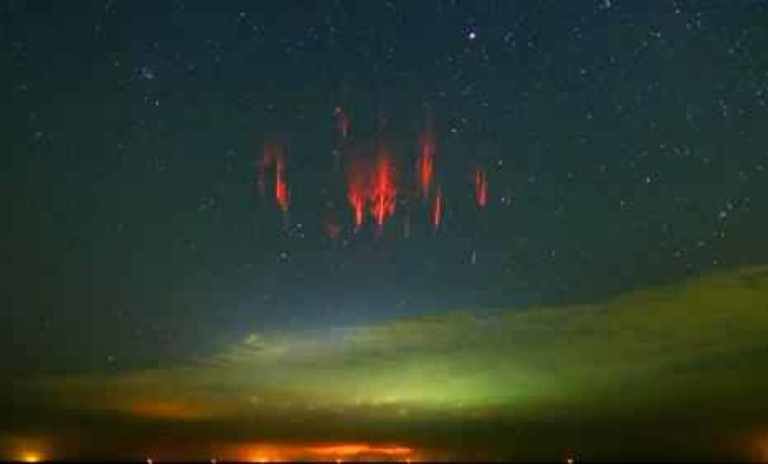
© Yasuo TakedaSprites appear above cumulonimbus clouds off the coast of Hokota, Ibaraki Prefecture, on Nov. 25.
Photographer Yasuo Takeda thought he was seeing things when strange lights shot up into the sky off the coast from Hokota, Ibaraki Prefecture, east of Tokyo, on Nov. 25.
But he was actually lucky enough to witness sprites, a phenomenon that is rarely observed, let alone photographed, as the natural lights are usually obscured by the lightning that often accompanies them.
Sprites occur about 50 to 90 kilometers above ground and become visible when nitrogen molecules emit light after coming into contact with electrical charges released from lightning clouds.
"It happened in an instant as though it was some sort of optical illusion," said Takeda, 56, of his fortunate chance encounter.
It is believed that sprites occur frequently during the winter off the coast of Ibaraki and Chiba prefectures as well as in the Sea of Japan.
Takeda used his meteorological knowledge as a weather forecaster to work out the time and location where the sprites might appear.
Comment: Further reading: